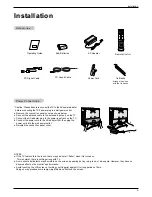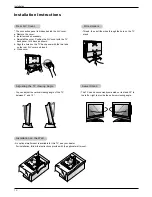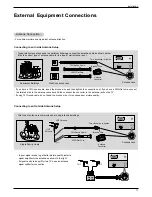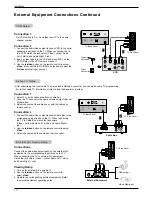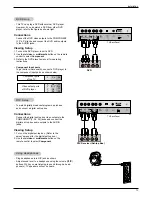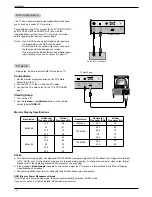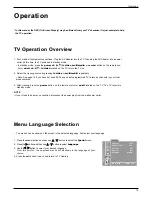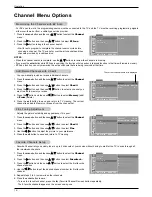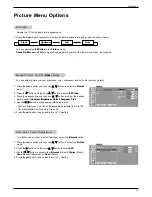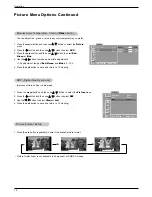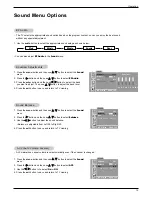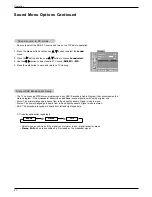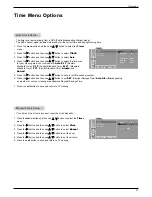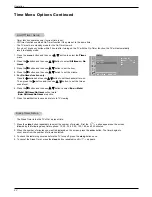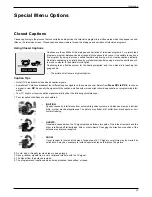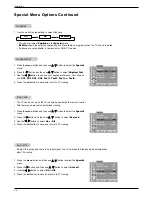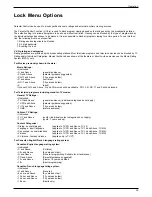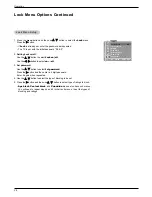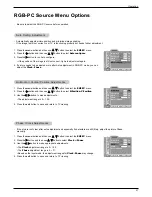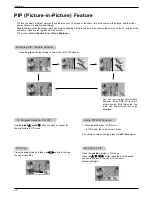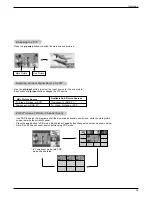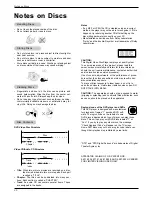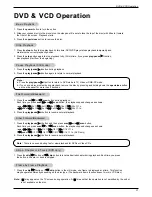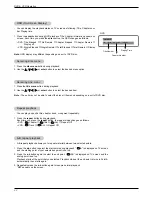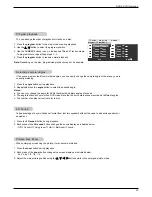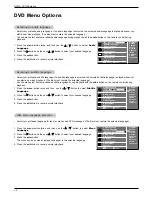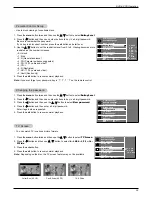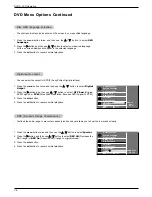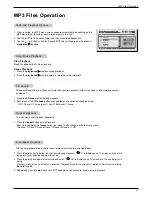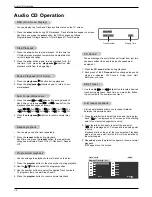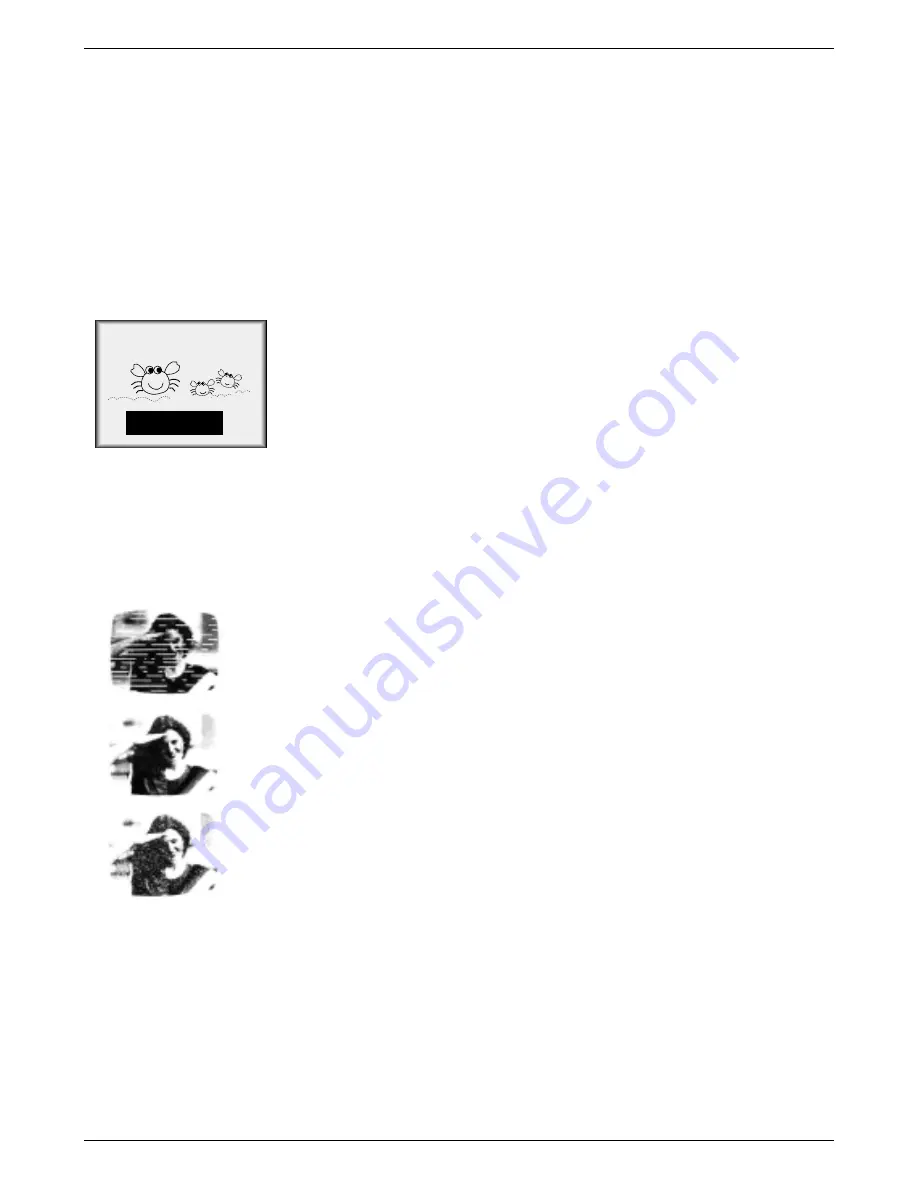
23
Operation
Special Menu Options
Special Menu Options
Closed Captions
Closed Captions
2. An old, bad, or illegally recorded tape is being played.
3. Strong, random signals from a car or airplane interfere with the TV signal.
4. The signal from the antenna is weak.
5. The program wasn’t captioned when it was produced, transmitted, or taped.
Closed captioning is the process that converts the audio portion of a television program into written words which then appear as sub-
titles on the television screen. Closed captions allow viewers to read the dialogue and narration of television programs.
Captions are the subtitles of the dialogue and narration of television programs. For prerecorded
programs, program dialogue can be arranged into captions in advance. It is possible to caption a
live program by using a process called real-time captioning, which creates captions instantly.
Real-time captioning is normally done by professional reporters using a machine shorthand sys-
tem and computer for translation into English.
Captioning is an effective system for the hearing-impaired, and it can also aid in teaching lan-
guage skills.
•
The picture at left shows a typical caption.
•
IGNITION:
Usually caused by interference from automobile ignition systems, and also neon lamps, electrical
drills, or other electrical appliances. The picture may flutter, drift, suffer from black spots, or hori-
zontal streaking.
•
GHOSTS:
Ghosts are caused when the TV signal splits and follows two paths. One is the direct path and the
other is reflected off tall buildings, hills or other objects. Changing the direction or position of the
antenna may improve reception.
•
SNOW:
If your receiver is located at the weak, fringe area of a TV signal, your picture may be marred by
small dots. It may be necessary to install a special antenna to improve the picture.
Caption Tips
FOLLOW ME
Using Closed Captions
• Not all TV broadcasts include closed caption signals.
• Sometimes TV stations broadcast four different caption signals on the same channel. Select from
From CC 1 to CC 4
, to choose
a signal to view.
CC 1
is usually the signal with the captions, while another mode might show demonstration or programming infor-
mation.
• Your TV might not receive caption signals normally under the following circumstances.
1. Poor reception conditions are encountered:

